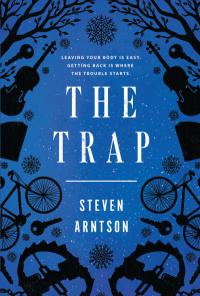Creativity and the Research Paper by Steven Arntson
Creativity and the Research Paper
By Steven Arntson
 I wanted to become a writer of adventure books from about the age of nine, as soon as I learned that there were such things as "writers" who produced the books I loved. I started creating original stories about space aliens and barbarian adventurers, first in longhand, then on my mother's Remington Travel-Riter. Looking back, these inaugural forays weren't fueled only by my desire to fall into exciting fantasy stories—I used plot, character, and theme to help me understand the world around me.
I wanted to become a writer of adventure books from about the age of nine, as soon as I learned that there were such things as "writers" who produced the books I loved. I started creating original stories about space aliens and barbarian adventurers, first in longhand, then on my mother's Remington Travel-Riter. Looking back, these inaugural forays weren't fueled only by my desire to fall into exciting fantasy stories—I used plot, character, and theme to help me understand the world around me.
The literary landscape has transformed since my hunt-and-peck salad days. Hopeful young creative writers now make use of online platforms like Wattpad or Fanfiction.net to write and distribute their stories, or they might even tell tiny serialized tales on Twitter or through Facebook. The impulse itself, however—the desire to use fiction to study life—remains as strong in my students today as it was for my own analog cohort.
Creative writing might seem a far throw from the core curriculum of a class like English 102. And it's true that I spend the lion's share of class time engaged in research-oriented writing. The most complex essay in my sections of 102 involves students picking a contemporary trend related to human rights, politics, education, food, or housing. They study this trend individually and in groups, and produce argumentative essays describing the origin of the trend and also what can be done to steer it in a positive direction in the future.
However, once this process is finished, we take a break from research and shift to a study of metaphor as embodied by that genre of stories popularly called folk- or  fairy-tales. Class members study imagery in fairy literature, and discuss the ideas about culture and morality contained within. The final assignment for the class is to use metaphor to write a fairy tale about the topic each student chose for their argumentative essay. A student who studied immigration issues between the US and Mexico, for instance, might write a tale about two imaginary countries separated by a magical hedge, and use this scenario to enliven the sometimes dry statistical universe of their research.
fairy-tales. Class members study imagery in fairy literature, and discuss the ideas about culture and morality contained within. The final assignment for the class is to use metaphor to write a fairy tale about the topic each student chose for their argumentative essay. A student who studied immigration issues between the US and Mexico, for instance, might write a tale about two imaginary countries separated by a magical hedge, and use this scenario to enliven the sometimes dry statistical universe of their research.
My own writing life has been an example of this idea—using stories to understand the whys and wherefores of human existence that defy easy comprehension. There's no dividing line between investigation, reason, and creativity. The mystery of the unknown can drive a researcher to find previously hidden possibilities, and it can also drive a writer to sit down and begin: "Once upon a time ..."

